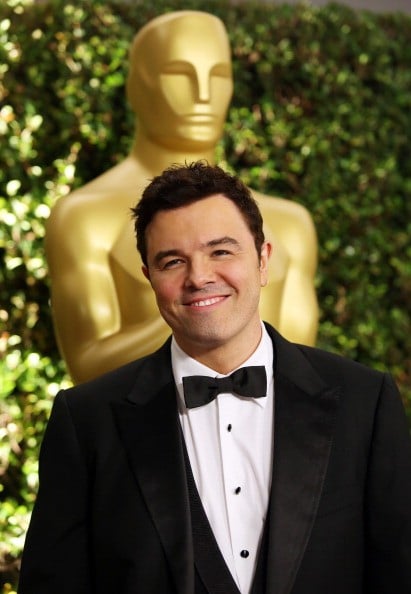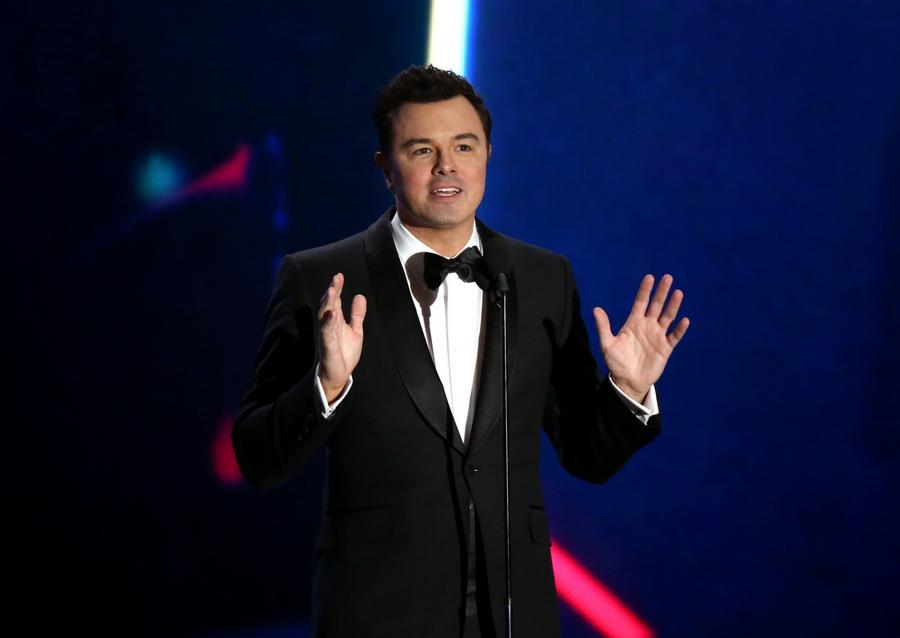Seth MacFarlane at a Glance
- Categories: Celebrities, Celebrities > Comedians
- Net Worth: $300 Million
- Birthdate: Oct 26, 1973 (50 years old)
- Birthplace: Kent
- Gender: Male
- Profession: Actor, Composer, Animator, Television producer, Voice Actor, Comedian, Singer, Screenwriter, Film director, Television Director
- Nationality: United States of America
- Height: 5 ft 10 in (1.78 m)
Seth MacFarlane Net Worth: How the Creator of Family Guy Built His $300 Million Empire
Seth MacFarlane, a name synonymous with irreverent humor, animated television, and a surprising amount of musical talent, has built a financial empire that reflects his diverse creative endeavors. With a net worth estimated at $300 million, MacFarlane’s success is a testament to his ability to create content that resonates with a global audience. This article delves into the life, career, and financial triumphs of Seth MacFarlane, exploring the key moments and decisions that shaped his remarkable journey.
Early Life and the Genesis of a Creative Mind
Born on October 26, 1973, in Kent, Connecticut, Seth Woodbury MacFarlane displayed creative inclinations from a young age. His interest in illustration blossomed during his childhood, fueled by classic cartoons such as Woody Woodpecker and The Flintstones. This early exposure ignited a passion for animation, leading him to pursue a career in the field at the tender age of five. This early start foreshadowed his future success, as he began honing his storytelling skills and developing his unique comedic voice.
MacFarlane’s entrepreneurial spirit was evident even in his youth. At nine years old, he began publishing his own comic strip, “Walter Crouton,” in The Kent Good Times Dispatch. This weekly gig earned him a modest $5 per week, marking his first foray into professional creative work. This early experience provided valuable insight into the creative process, from ideation to execution. MacFarlane’s ability to turn his passion into a viable business was evident very early on.
RISD and Early Career: From Student Films to Professional Animation
MacFarlane’s pursuit of animation led him to the Rhode Island School of Design (RISD), where he studied film, video, and animation. During his time at RISD, he further developed his skills in filmmaking. He also formed important relationships. Notably, he met Patrick Henry, who introduced him to his brother Mike Henry. Mike Henry, an aspiring stand-up comedian and actor, would later become a key collaborator on several of MacFarlane’s projects, most notably voicing characters like Cleveland Brown, Herbert, Consuela, and Bruce in Family Guy and its spin-off.
MacFarlane’s work at RISD showcased his talent and ambition, setting the stage for his entry into the animation industry. The skills and connections he made during his college years were instrumental in launching his career and solidifying his future success.
Hanna-Barbera and the Launchpad to Prime Time
During his senior year at RISD, MacFarlane created a film thesis titled “The Life of Larry.” The film, which showcased his signature humor and animation style, impressed his professor, who subsequently submitted it to executives at Hanna-Barbera. The executives were sufficiently impressed to offer him a job. MacFarlane’s work at Hanna-Barbera allowed him to further refine his skills. He contributed to various projects, gaining valuable experience and exposure to the industry.
In 1996, he developed an updated version of “The Life of Larry” called “Larry & Steve,” which featured a lovable but dimwitted middle-aged character named Larry and his intelligent dog, Steve. This concept laid the groundwork for his future success and helped him develop characters that resonated with a wide audience. The pilot served as a template for his breakthrough show.

(Krista Kennell/AFP/Getty Images)
Family Guy: The Rise, Fall, and Resurrection of a Cultural Phenomenon
After seeing “Larry & Steve,” executives at Fox saw potential. The network asked MacFarlane to pitch a show idea. Though the initial concept was rejected, the success of Fox’s 1997 show, “King of the Hill,” prompted the network to reconsider MacFarlane’s proposal. This time, Fox agreed to produce a pilot, offering a budget of just $50,000—a stark contrast to the $1 million-per-episode budgets of other animated prime-time shows.
MacFarlane spent six months creating what he himself admits was a crudely animated film. This pilot, however, impressed Fox executives, who immediately ordered a full season. At 24, MacFarlane became the youngest executive producer in television at the time, marking a major career milestone.
“Family Guy” debuted on January 31, 1999, immediately following Fox’s broadcast of Super Bowl XXXIII. The show’s debut attracted a massive audience of 22 million viewers, and the first season performed well enough to earn a second season renewal. Unfortunately, the show faced stiff competition in its Thursday 9 PM time slot during the second season, and ratings subsequently declined. Fox technically canceled the show in May 2000 after its second season. However, after a last-minute reprieve, a third season was approved and returned in November 2001. The show continued to find a loyal audience but was officially canceled in the summer of 2002.
The show’s cancellation would not be the end of “Family Guy”. Reruns of the series on Cartoon Network unexpectedly catapulted the show to new heights. The show became the network’s highest-rated program, boosting viewership by over 200%. In 2003, the release of the first and second seasons on DVD was met with astounding success, with approximately 400,000 copies sold in the first week. The show was then revived in 2005.
Seasons 1 and 2 went on to sell millions of copies, becoming the best-selling TV DVDs of 2003 and 2004. The first two seasons were the second best-selling TV DVD sets in history, trailing only “Chappelle’s Show.” The show was subsequently brought back by Fox, with a fourth season premiering in May 2005, marking a significant turning point in the show’s history.

Getty Images
Syndication and Merchandise: The Billion-Dollar Machine
Over the subsequent 15 years, “Family Guy” aired over 300 new episodes, spanning an additional 14 seasons. The show has been syndicated in dozens of countries and translated into numerous languages. Between 2005 and 2008, the show generated over $1 billion in revenue, with $400 million from syndication deals, $400 million from DVD sales, and $200 million from merchandise sales. To date, the show has generated several billion dollars in revenue from all income sources.
As of this writing, a single syndicated episode sells for $2 million. A single 30-second commercial on the new airings of the show sells for $200,000. Furthermore, the show generates $500 million annually in ad revenue. Over 500 “Family Guy”-related toys and other items have been licensed to major retailers, including Wal-Mart and Target, generating $100 million in annual revenue.
Seth MacFarlane’s Earnings: The Financial Rewards of Animation
Between 2005 and 2008, MacFarlane earned $2 million per year from Fox for his show-running duties. In 2009, he negotiated a 5-year, $100 million deal to continue overseeing his animation empire. At the time, this was the largest and most expensive contract in television history. Neither of those salary figures include DVD or merchandise rights, which are estimated to earn MacFarlane an additional $20 million annually!
MacFarlane, along with Trey Parker, Matt Stone and Matt Groening, exemplifies the massive earning potential within the animation industry.
Other Ventures: American Dad, The Cleveland Show, Films, and Music
Beyond “Family Guy,” Seth MacFarlane has expanded his creative footprint with various other projects:
- American Dad: He created and executive-produced “American Dad,” which premiered in 2005 and has produced over 350 episodes across more than 20 seasons.
- The Cleveland Show: He co-created “The Cleveland Show,” which aired from 2009 to 2013.
- Film: He has written, directed, and produced several films, including “Ted” (2012), which grossed over $500 million; “Ted 2” (2015), which grossed nearly $200 million; and the western comedy “A Million Ways to Die in the West” (2014), which earned $80 million on a budget of $40 million.
- The Orville: He created the live-action Fox series “The Orville” in 2016, showcasing his versatility in various genres.
- Music: He has released five musical albums and performs regularly as a big band act, demonstrating his passion for music.
MacFarlane’s ability to thrive across multiple platforms and creative mediums highlights his diverse talents and entrepreneurial spirit.
Real Estate Holdings: A Glimpse into MacFarlane’s Property Portfolio
MacFarlane’s real estate portfolio reflects his success and affluence. Since 2008, his primary residence has been a large mansion in Beverly Hills, which he purchased for $13.5 million. In 2019, he added another property to his collection, spending $15.7 million on a home in Malibu, California.
Personal Life: Relationships, Achievements, and Legacy
MacFarlane has maintained a private personal life. Though unmarried and without children, he has been romantically linked to several actresses, including Eliza Dushku, and Emilia Clarke from 2012 to 2013. His accomplishments have been recognized through numerous accolades. He received a star on the Hollywood Walk of Fame in 2019 and was inducted into the Television Hall of Fame in 2020.
Conclusion: The Enduring Impact of Seth MacFarlane
Seth MacFarlane’s journey from a childhood fascination with animation to a $300 million net worth is a testament to his talent, perseverance, and business acumen. His creation of groundbreaking shows such as “Family Guy,” his expansion into film and music, and his shrewd business decisions have cemented his legacy as one of the most influential and successful figures in modern entertainment. His continued projects guarantee that he will remain a cultural force for years to come.
Career Earnings
| Source / Title | Amount |
|---|---|
| Family Guy | $50 Thousand/episode |
| Total Earnings | $50 Thousand |

